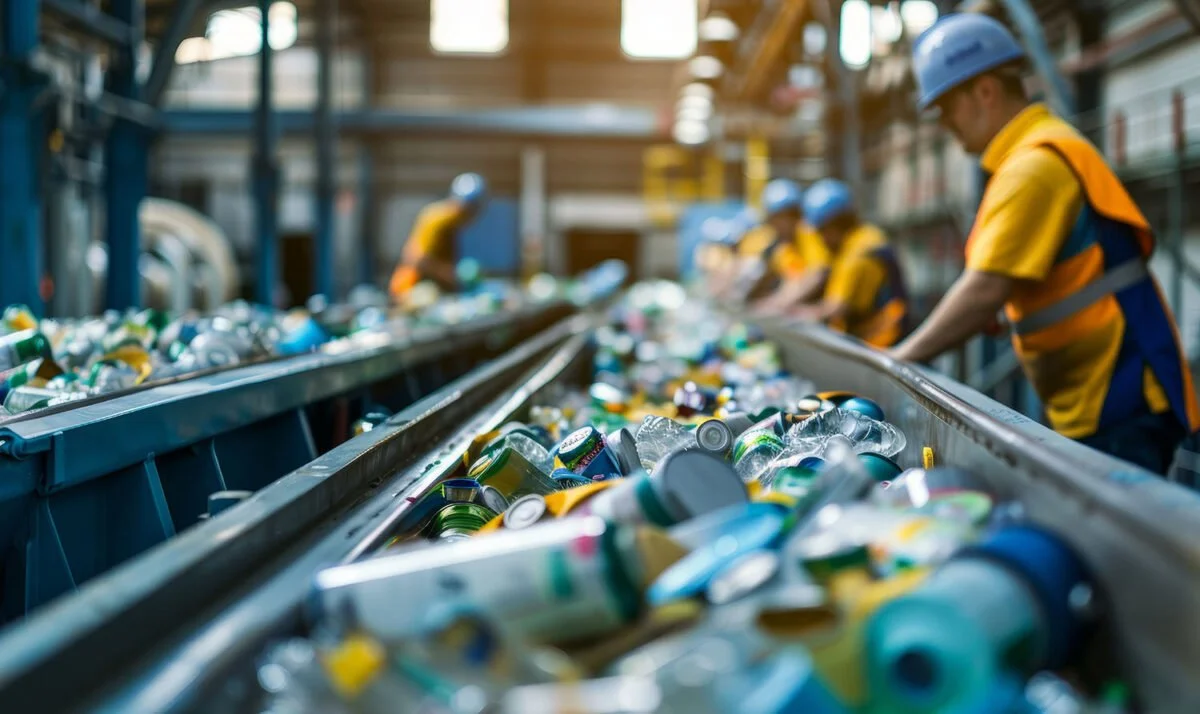Maximizing Value from Hard-to-Recycle Plastics: A Strategic Approach for MRFs
Unlocking New Revenue Streams: How MRFs Can Monetize Hard-to-Recycle Plastics
For most Material Recovery Facilities (MRFs), managing hard-to-recycle plastics such as flexible packaging, multi-layer films, and mixed plastics often feels like an unavoidable expense rather than a potential profit center. These materials are typically sent to landfills due to their complex composition and the limitations of traditional mechanical recycling. However, advances in technology and shifting market demands are changing the game, offering MRFs new ways to convert these difficult plastics into valuable commodities. This article explores how MRFs can create new revenue streams by partnering with chemical recyclers, tapping into secondary markets, and investing in better sorting technologies.
The Challenge of Hard-to-Recycle Plastics
Hard-to-recycle plastics, often labeled as #3–#7 or “mixed plastics,” include items like plastic films, snack pouches, food wrappers, and multi-layered packaging. These materials are made from multiple resin types, such as PET, polyethylene, and polypropylene, often combined with aluminum or adhesives. This makes them difficult to separate and process using standard recycling methods. According to the EPA, only 8.7% of plastics in the U.S. are successfully recycled, with flexible plastics accounting for a significant portion of what ends up in landfills.
Why This Represents a Missed Opportunity
Discarding these plastics leads to lost revenue potential and increased landfill fees. Yet demand for recycled content is steadily growing, driven by sustainability commitments from corporations and regulatory pressures. Companies like Unilever and Nestlé have pledged to use more post-consumer recycled (PCR) content in their products, creating a strong incentive for MRFs to tap into this market and meet demand for non-traditional recycled materials.
Solutions for Monetizing Hard-to-Recycle Plastics
1. Chemical Recycling Partnerships
Chemical recycling breaks down plastics into their original chemical components, allowing them to be repurposed into high-quality feedstocks. This process is ideal for handling complex, multi-layered plastics that traditional recycling cannot process. Pyrolysis, depolymerization, and solvolysis are the main chemical recycling methods used today. By partnering with chemical recyclers, MRFs can transform previously unrecyclable materials into valuable commodities.
• Example: Brightmark, an advanced recycling company, partners with MRFs to source plastic films and packaging waste for conversion into synthetic fuels and waxes. This helps MRFs divert waste from landfills and generate revenue from materials they previously paid to dispose of.
2. Secondary Markets for Industrial Use
Some hard-to-recycle plastics can be processed into lower-value but highly demanded products such as composite lumber, pallets, and insulation. These secondary markets often require less purity and are more accepting of mixed plastic streams.
• Example: Trex, a major producer of composite decking, sources plastic films and wood fibers to manufacture its products. MRFs that supply plastic film in bulk can secure stable contracts and revenue streams by tapping into this market.
3. Advanced Sorting Technology
Upgrading sorting lines with optical sorters and AI-assisted systems allows MRFs to accurately identify and separate hard-to-recycle plastics from the general waste stream. This improves purity levels and increases the value of these materials when sold to recyclers and manufacturers. While the initial investment can be substantial, facilities that invest in state-of-the-art sorting technology often see long-term gains in efficiency and material recovery.
4. Brand and Corporate Partnerships
Many companies seeking to improve their environmental footprint are partnering directly with MRFs to secure a steady supply of recycled content. These partnerships can lead to long-term supply contracts and financial support for infrastructure improvements.
• Example: PepsiCo’s “Recycling Partnership” initiative works with MRFs and local programs to increase the collection of flexible plastics and secure post-consumer recycled content for sustainable packaging.
Challenges to Overcome
While the opportunities are significant, MRFs must address several key challenges to make the most of these solutions.
• Contamination Levels: Even chemical recycling facilities require feedstock to meet certain purity standards. Implementing more precise sorting and staff training is essential to ensure materials meet buyer specifications.
• Transportation Costs: Shipping low-density plastics over long distances can be costly. MRFs can mitigate this by compacting materials or forming partnerships with regional buyers to reduce freight expenses.
• Market Volatility: Prices for mixed plastics and chemically recycled feedstocks can fluctuate. Diversifying end markets and forming partnerships with multiple buyers can help stabilize revenue.
Case Study: A Midwest MRF’s Success with Flexible Plastics
A regional MRF in the Midwest partnered with a chemical recycling company specializing in pyrolysis to process plastic films and multi-layer packaging. After upgrading its sorting line with new optical sorters, the facility began separating flexible plastics more efficiently. In the first 12 months, the MRF diverted 2,000 tons of plastics from landfills, saving $250,000 in disposal fees and generating $300,000 in revenue from feedstock sales. This partnership not only increased profitability but also positioned the MRF as a sustainability leader in its market.
The Future of Hard-to-Recycle Plastics
The global push for sustainable packaging and circular economy practices will continue to drive investment in chemical recycling and secondary markets. According to a McKinsey & Company report, the market for chemically recycled plastics could reach $10 billion annually by 2030. MRFs that invest in technology and partnerships today will be positioned to capitalize on these opportunities as demand grows.
Conclusion
Hard-to-recycle plastics no longer need to be a cost center for MRFs. By forming partnerships with chemical recyclers, investing in advanced sorting technologies, and exploring secondary markets, MRFs can turn these challenging materials into valuable revenue streams. At Midas Peak, we help MRFs unlock their full potential by identifying new markets, improving operational efficiency, and connecting facilities with the right partners. Contact us today to learn how we can support your facility in turning waste into profit.

